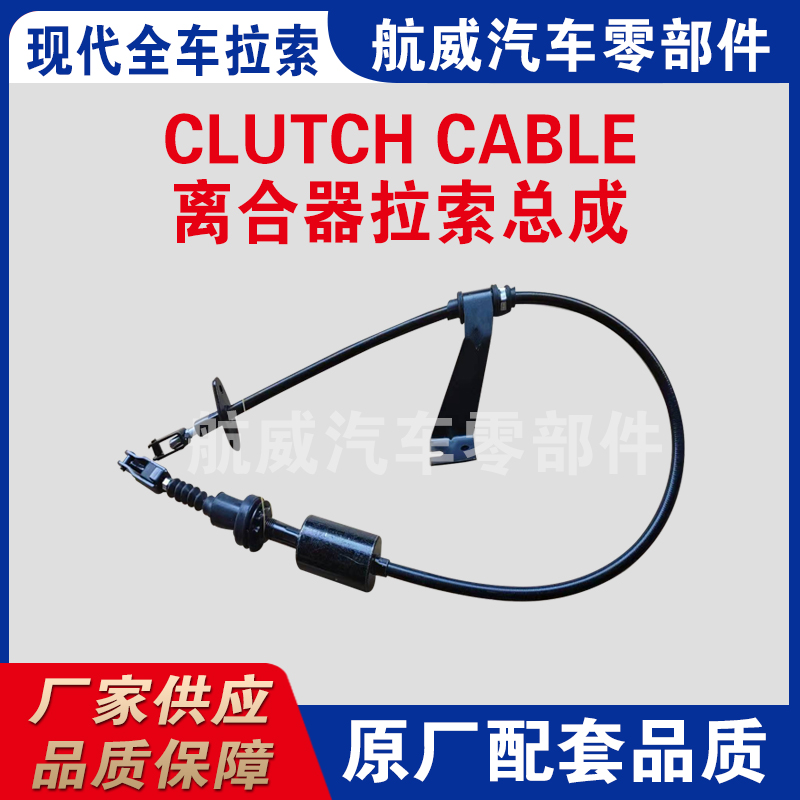Clutch Cable Set for Smooth Gear Shifting Performance and Durability
Understanding Clutch Cable Assembly A Comprehensive Overview
The clutch cable assembly is a crucial component in the operation of manual transmission vehicles. Serving as the vital link between the clutch pedal and the clutch mechanism, it enables the driver to engage and disengage the engine from the wheels. Although it may seem like a simple part, the functionality and importance of the clutch cable assembly cannot be overstated.
Components of the Clutch Cable Assembly
A clutch cable assembly typically consists of several key components, including the cable itself, the cable housing, and various attaching hardware. The cable is usually made of high-strength steel, designed to withstand the tension and strain produced during operation. The cable housing, often made from durable plastic or metal, protects the cable from environmental damage, while also providing support and guidance.
In addition to these main components, the assembly also includes several connectors and levers that interface with the clutch pedal and the clutch fork. Proper alignment and installation of these components are critical for optimal performance and longevity.
How It Works
When the driver presses the clutch pedal, the motion is transmitted through the clutch cable assembly. The pedal activates a lever that pulls on the clutch cable, which in turn moves the clutch fork. This movement disengages the clutch, separating the engine from the transmission and allowing the driver to shift gears smoothly. Upon releasing the pedal, the spring mechanism within the clutch engages again, reconnecting the engine and transmission for power transfer.
This mechanical process is vital for smooth vehicle operation. A malfunctioning clutch cable can lead to difficulty in shifting gears, slippage, or even complete failure to engage the clutch, resulting in a challenging and potentially dangerous driving experience.
Signs of Wear and Tear
clutch cable assembly

Like all mechanical components, clutch cable assemblies are subject to wear and tear. Over time, cables can fray, stretch, or even break. Some common signs that a clutch cable may be failing include
1. Increased Pedal Resistance If the clutch pedal feels unusually stiff or difficult to press, it may indicate that the cable is binding or has insufficient lubrication. 2. Unresponsive Clutch If the clutch does not engage or disengage as expected, the cable may be stretched or the connections may be loose or worn. 3. Vibrations or Noises Unusual noises when pressing the clutch pedal can indicate that the cable or associated components are frayed or damaged.
4. Visible Damage Regular inspection of the clutch cable assembly can reveal signs of wear, such as frayed cables or cracked housings, that require immediate attention.
Maintenance and Replacement
To ensure the longevity of the clutch cable assembly, regular maintenance is essential. This includes checking for proper lubrication and inspecting cables for signs of wear. Clutch cables can be lubricated to reduce friction and improve performance, but it is important to use the appropriate type of lubricant that won’t degrade the cable material.
If a cable has sustained significant damage, replacement is the best course of action. The process typically involves removing the old cable, adjusting the new cable for proper tension, and ensuring all components are aligned correctly. While some vehicle owners may choose to perform this replacement themselves, consulting with a professional mechanic is often recommended for those unfamiliar with transmission components.
Conclusion
The clutch cable assembly is a vital part of any manual transmission vehicle, playing a key role in the engagement and disengagement of the clutch. Understanding its components, how it functions, and the signs of potential failure can empower vehicle owners to take proactive measures in maintenance and service. By paying attention to the health of the clutch cable assembly and addressing any issues promptly, drivers can ensure a smoother and safer driving experience. Whether you are a car enthusiast or simply a daily driver, knowledge of your clutch cable assembly can make all the difference in performance and reliability on the road.
-
Workings of Clutch Pipe and Hose SystemsNewsJun.04,2025
-
The Inner Workings of Hand Brake Cable SystemsNewsJun.04,2025
-
The Secrets of Throttle and Accelerator CablesNewsJun.04,2025
-
The Hidden Lifeline of Your Transmission Gear Shift CablesNewsJun.04,2025
-
Demystifying Gear Cables and Shift LinkagesNewsJun.04,2025
-
Decoding Clutch Line Systems A Comprehensive GuideNewsJun.04,2025
